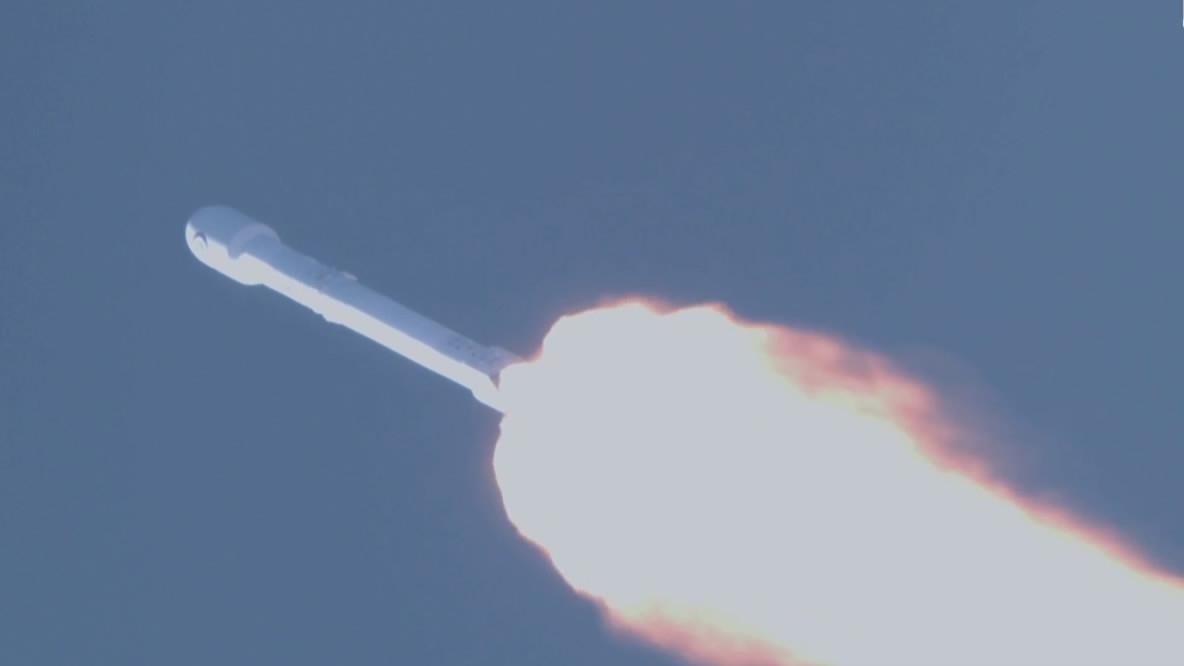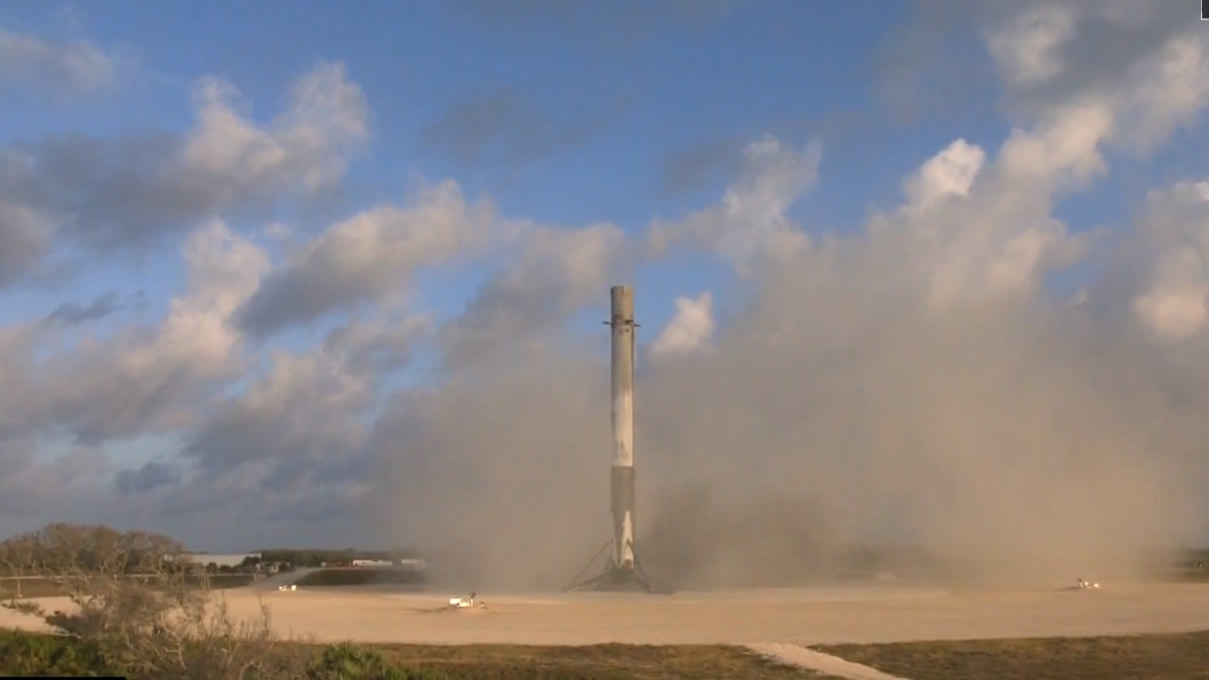SpaceX on Monday blasted off a secretive US government payload, known only as NROL-76, marking the first military launch for the California-based aerospace company headed by billionaire tycoon Elon Musk.
The payload for the National Reconnaissance Office (NRO), which makes and operates spy satellites for the United States, soared into the sky atop a Falcon 9 rocket at 7:15 a.m. local time.

The SpaceX rocket Falcon 9 carrying a secretive US military payload into space after liftoff. /SpaceX Photo
Following state separation minutes after the liftoff, Falcon 9’s first stage landed at the designated zone of Cape Canaveral Air Force Station. It will be examined and prepared for the next launch mission, according to the company.
Initially planned for Sunday, the launch was postponed in the last seconds before liftoff due to a sensor issue with the rocket, SpaceX said. The sensor in question was replaced ahead of Monday's attempt. Little was known about the payload due to its classified nature.
A spokeswoman was cited by the AFP as saying that the NRO did not provide information due to policy and the classified nature of the launch.

Falcon 9’s first stage lands at the designated zone of Cape Canaveral Air Force Station after launch mission. /SpaceX Photo
SpaceX was selected to launch NROL-76 "after a competition," said the NRO spokeswoman. She said she did not know when the contract, first announced last year, was awarded.
Until now, the US military has spent billions per year exclusively with United Launch Alliance, a joint operation of aerospace giants Boeing and Lockheed Martin, to launch government satellites.
SpaceX in 2014 protested the US Air Force's practice of using only ULA, saying it unfairly awarded billions of dollars to a single company for national security launches. SpaceX regularly launches unmanned cargo ships to the International Space Station, and is working on a crew capsule that could carry humans into orbit as early as next year.
(Source: AFP)
12227km










